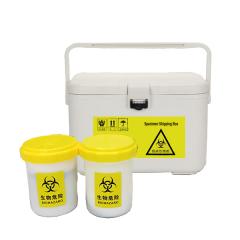In the 21st century, where medical innovation and global health security are paramount, cold chain logistics have become an indispensable component of modern vaccine development and distribution. This article explores how cold chain technology is revolutionizing the way vaccines are created, manufactured, and administered, ensuring that these life-saving tools reach the populations they are needed most. The seamless integration of cold chain logistics with cutting-edge research and development is not just an enhancement—it is a necessity for safeguarding human life in an increasingly interconnected world.
The Importance of Precision Temperature Control in Vaccine Development
Temperature control is not just a logistical detail; it is a cornerstone of vaccine research and development. From the earliest stages of clinical trials to the final packaging of vaccines for distribution, precise temperature control is essential for maintaining the integrity of active ingredients and ensuring the safety and efficacy of vaccines. For example, mRNA vaccines, a game-changer in the COVID-19 pandemic, rely on stable temperature conditions during transcription and translation processes. Without optimal temperature control, the genetic code could be disrupted, leading to ineffective or harmful vaccines.
The cold chain extends beyond manufacturing to encompass research facilities, where vaccines are often exposed to varying temperature conditions during testing and formulation development. Specialized labs equipped with temperature-controlled rooms and automated systems ensure that vaccines are consistently and accurately developed, minimizing the risk of contamination or degradation.

The Cold Chain in Vaccine Distribution: A Global Challenge
The distribution of vaccines across borders presents unique challenges that require advanced cold chain infrastructure. Vaccines must be transported from manufacturing facilities in urban centers to rural and underserved areas, often over long distances. This requires the use of temperature-controlled transportation solutions, including refrigerated trucks, insulated ships, and even ground transportation vehicles equipped with cold chain technology. These systems ensure that vaccines remain stable during transit, preventing degradation and maintaining their efficacy.
The cold chain also plays a critical role in global health initiatives, such as the Global Vaccine Equity and Access (GVEA) program, which aims to ensure that vaccines are accessible to all populations. By optimizing cold chain logistics, organizations can maximize the reach of their vaccination campaigns, filling gaps in healthcare systems worldwide.
Innovations in Cold Chain Technology for Vaccines
To address the challenges of cold chain logistics, researchers and industry leaders are developing innovative technologies that enhance efficiency and reliability. For instance, advancements in temperature monitoring systems allow for real-time tracking of vaccine conditions, ensuring that they are stored and transported within the required temperature ranges. These systems often integrate with Internet of Things (IoT) devices, enabling automated adjustments to environmental conditions and predictive maintenance of cold chain equipment.
Another breakthrough is the development of temperature-sensitive packaging materials, which provide visual and tactile cues to ensure proper storage conditions. For example, some vaccines are packaged in containers that change color or texture when exposed to temperatures above the safe range, serving as a simple yet effective quality control measure.
The Ethical and Social Considerations of Cold Chain Logistics
Beyond the technical aspects, the implementation of cold chain logistics raises important ethical and social considerations. The cost of maintaining temperature-controlled infrastructure in remote or resource-limited areas can be prohibitive, potentially widening the gap between vaccinated and unvaccinated populations. This highlights the need for equitable access to cold chain technology and highlights the importance of partnerships between governments, pharmaceutical companies, and non-governmental organizations.
Moreover, the ethical implications of cold chain logistics extend to the distribution of vaccines during crises. Ensuring that vaccines reach populations in time of need requires not just efficient logistics but also coordination with humanitarian organizations and local communities. This underscores the importance of a holistic approach to vaccine distribution, integrating cold chain technology with social and ethical considerations.
Conclusion: A Bright Future for Cold Chain Logistics
The role of cold chain logistics in vaccine distribution is not just a logistical task—it is a tool for saving lives. As we continue to face new health challenges and global crises, the importance of cold chain technology becomes even more apparent. By investing in research and development, fostering international collaboration, and addressing the social and ethical implications of cold chain logistics, we can ensure that vaccines are delivered safely and effectively to populations worldwide.
In conclusion, cold chain logistics is a vital enabler of global health security. It enables the timely and safe distribution of vaccines, which are critical tools in the fight against infectious diseases. As we navigate the complexities of the 21st century, it is our collective responsibility to ensure that cold chain logistics remain robust, efficient, and accessible. Only through this commitment can we guarantee that vaccines reach the hands of those in need, ultimately saving lives and improving public health outcomes.

 English
English  français
français русский
русский italiano
italiano español
español português
português العربية
العربية 日本語
日本語 한국의
한국의 magyar
magyar










